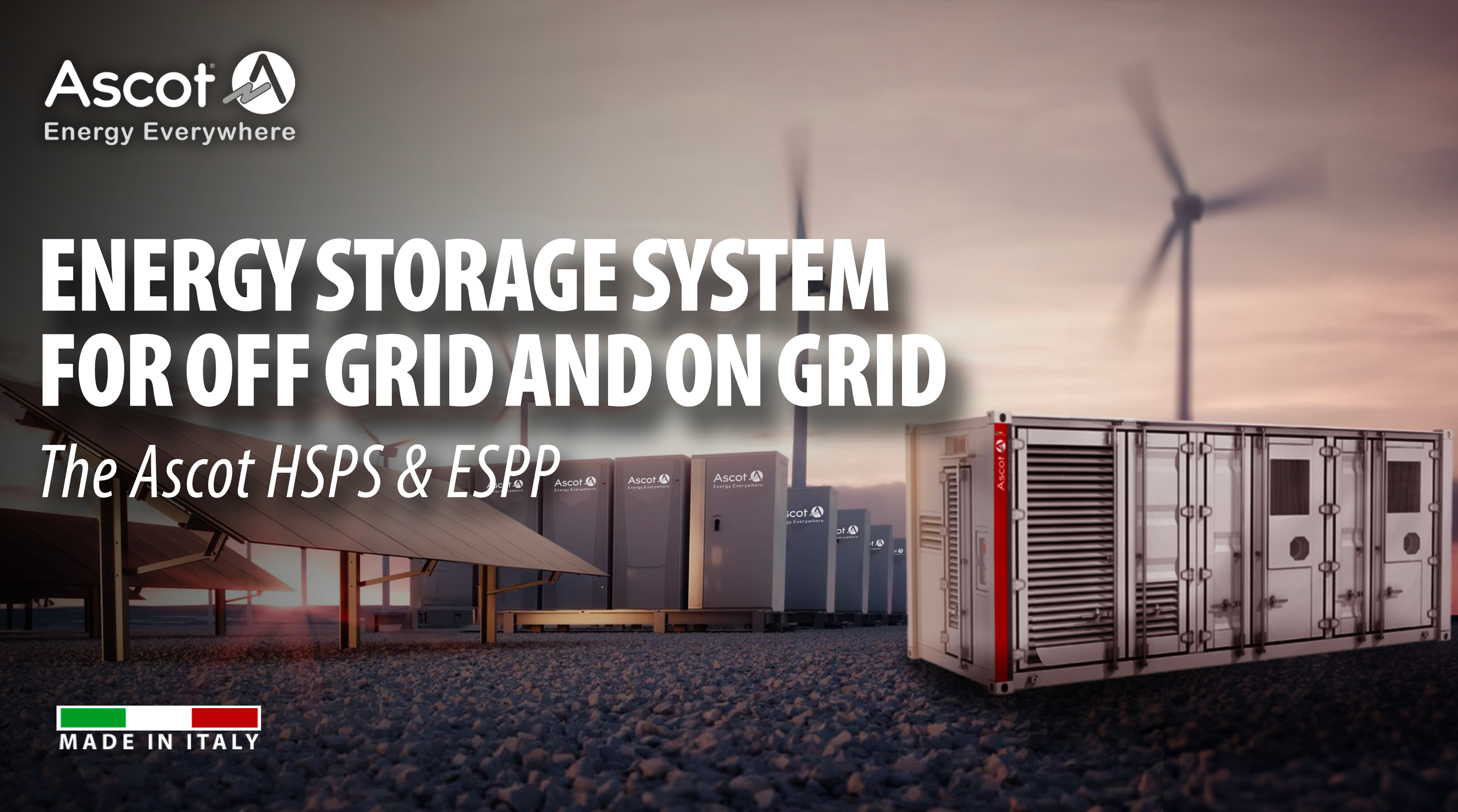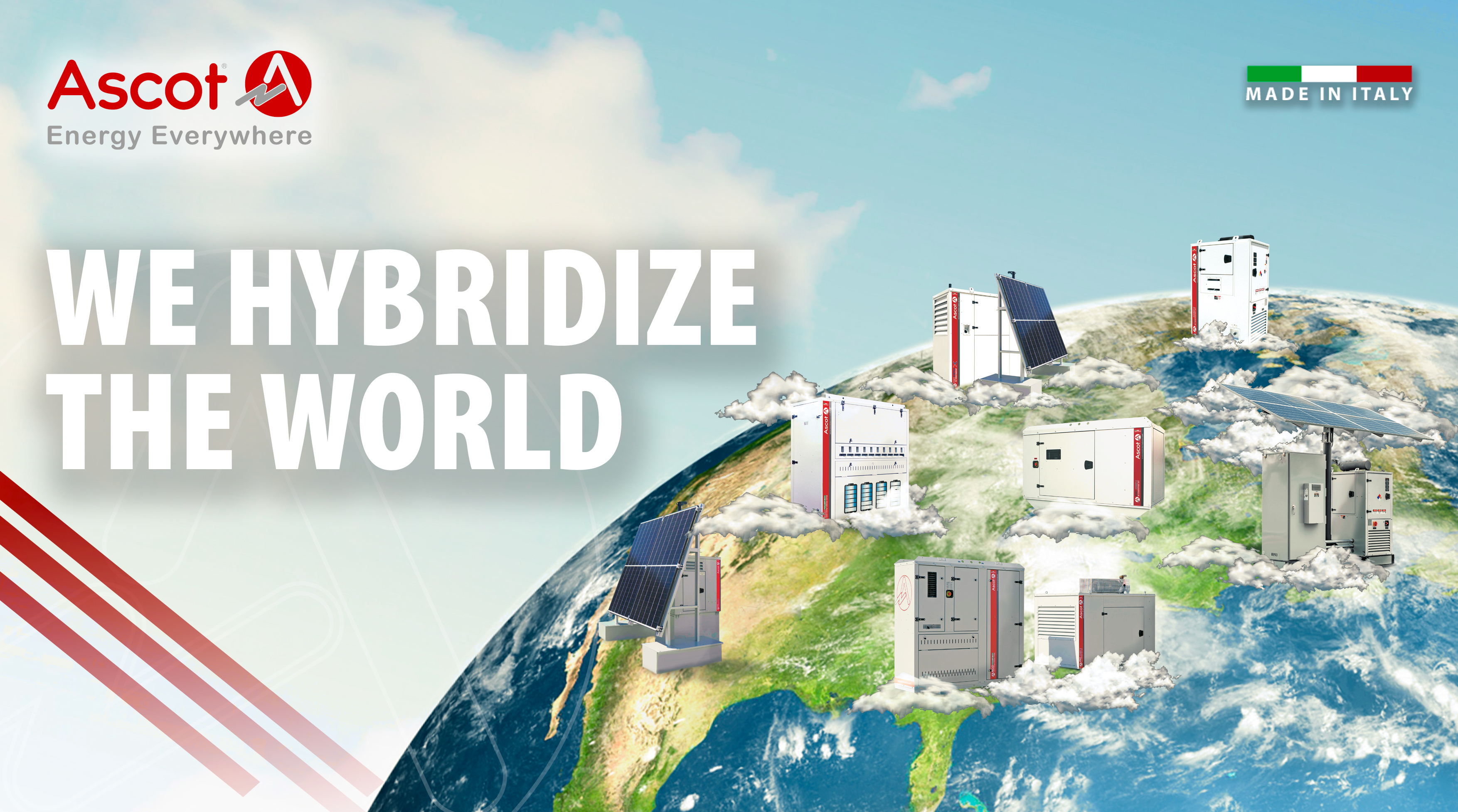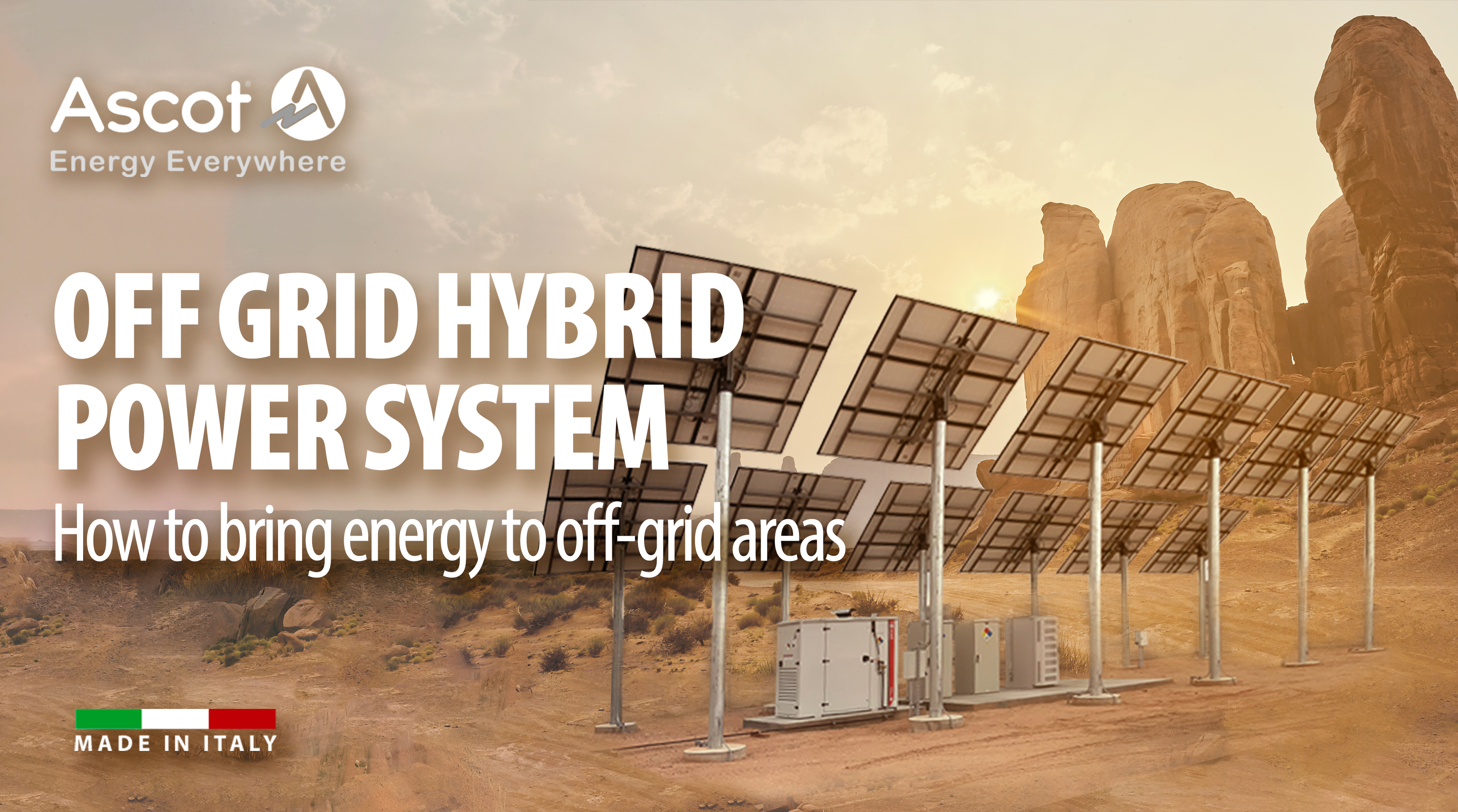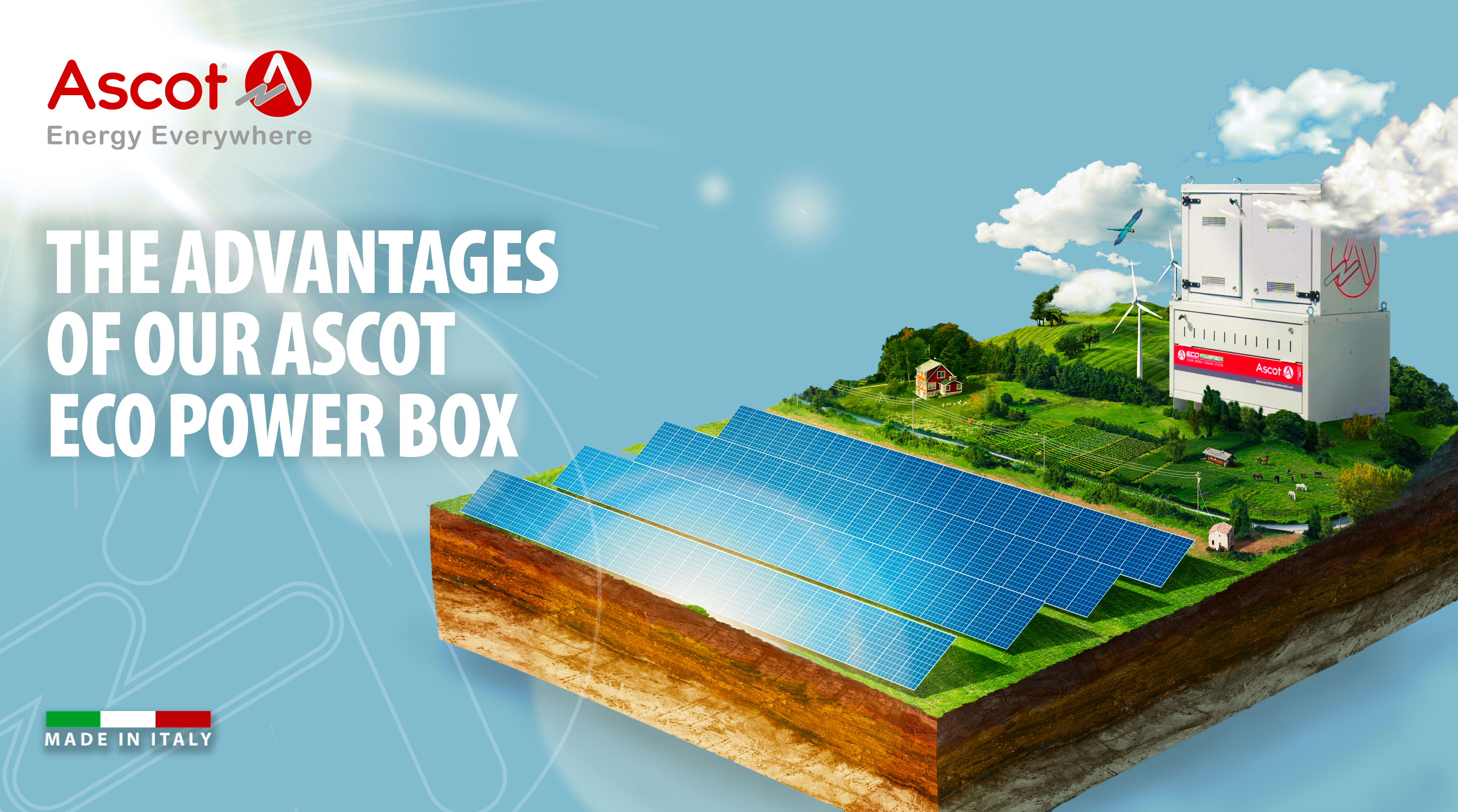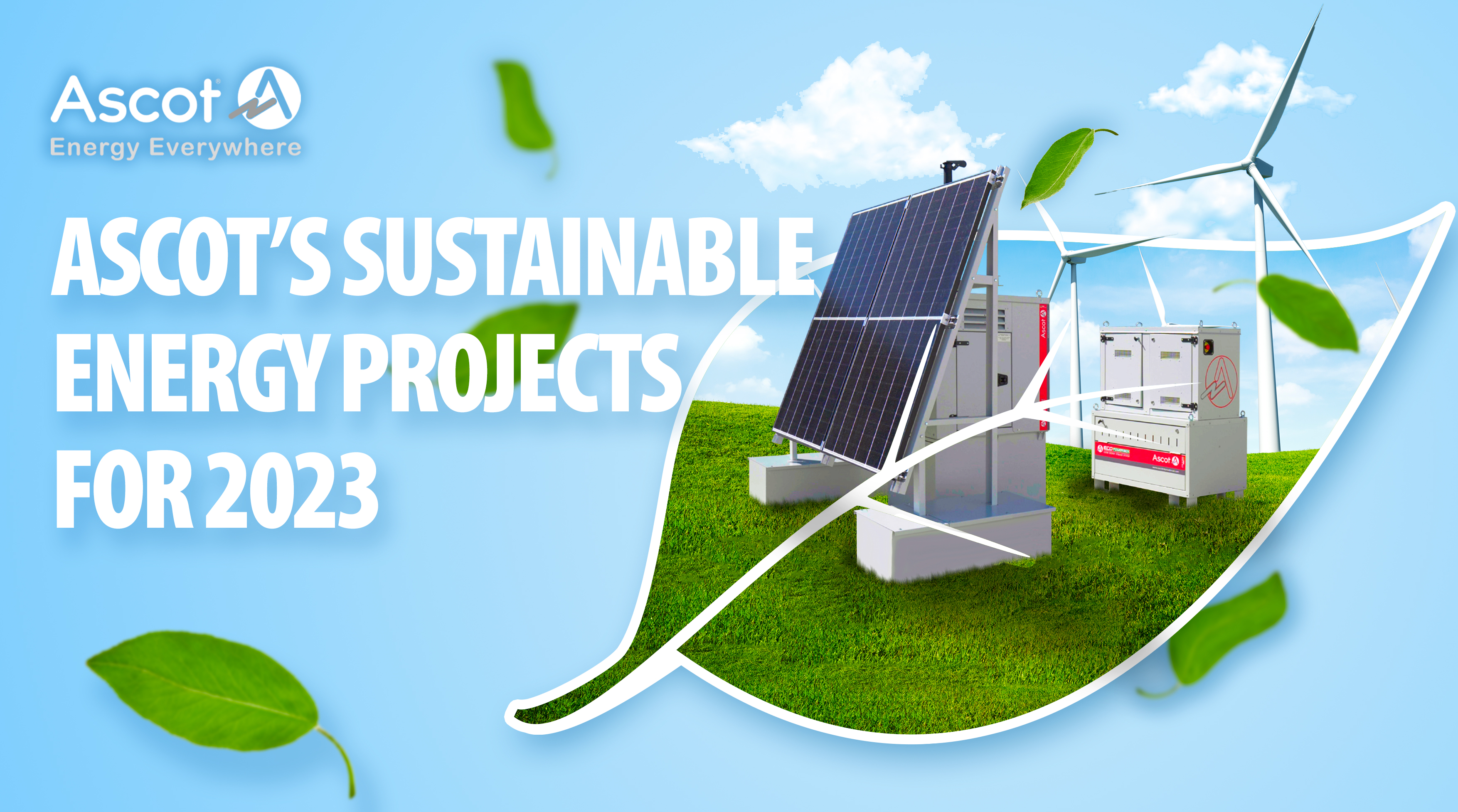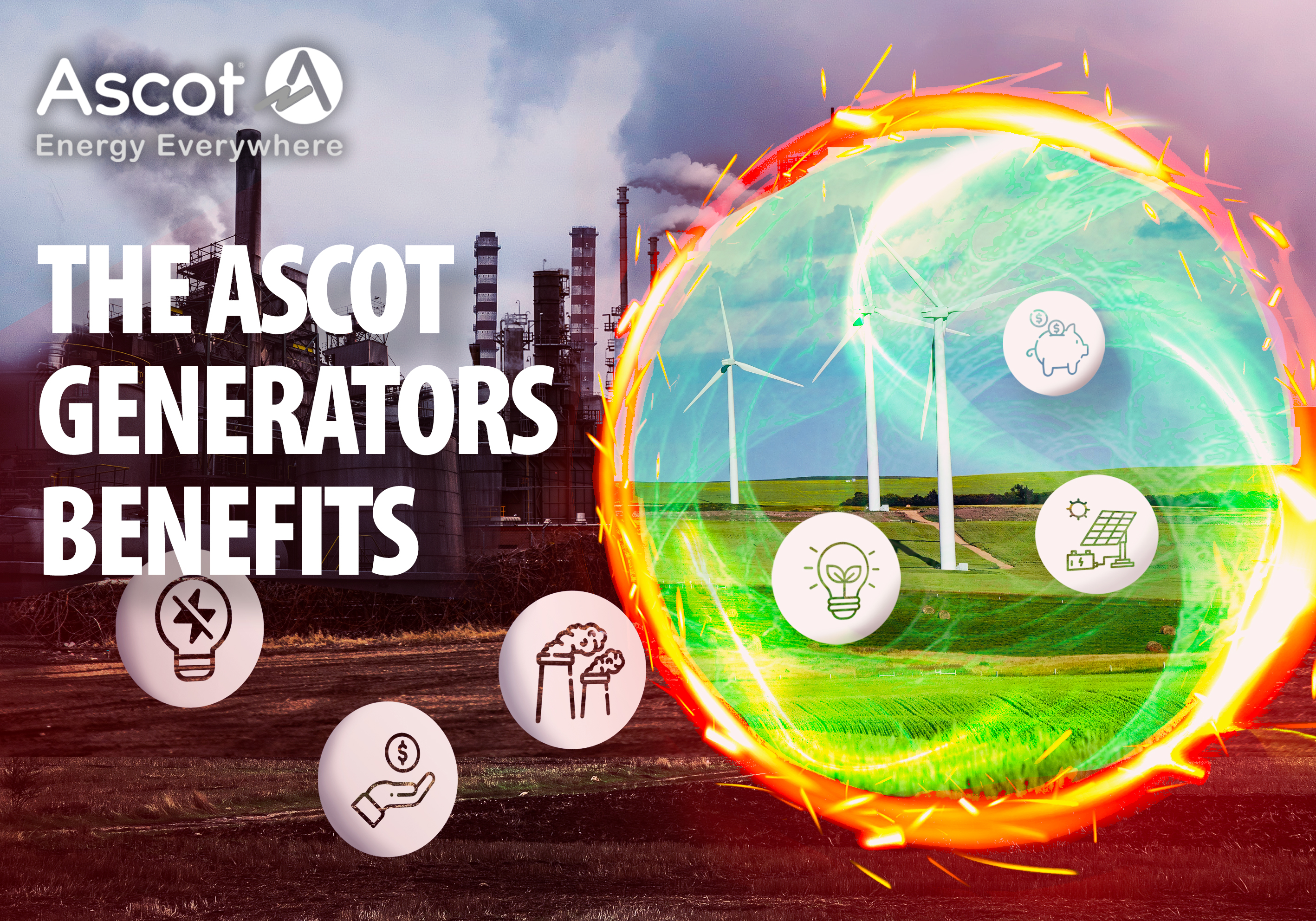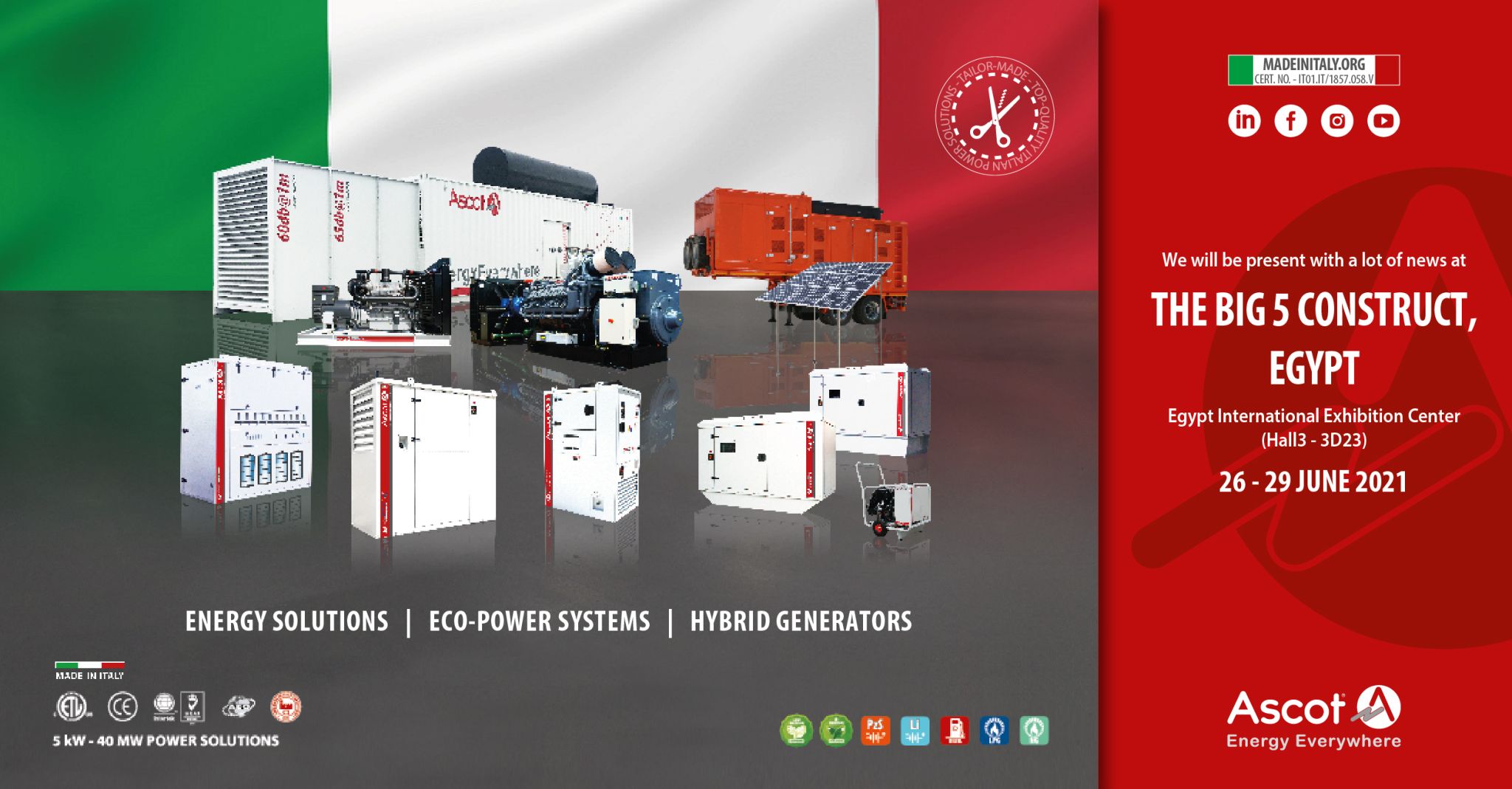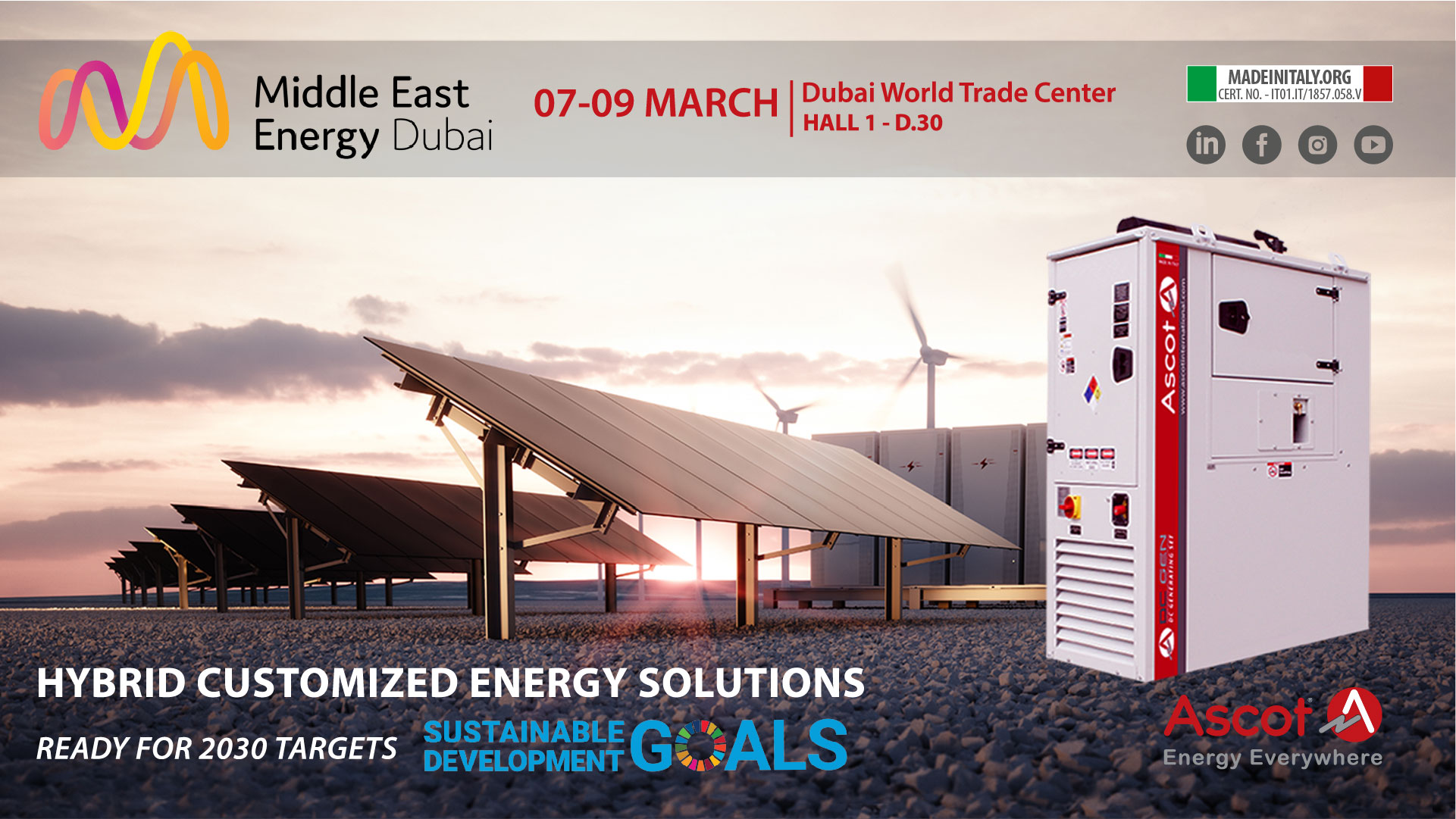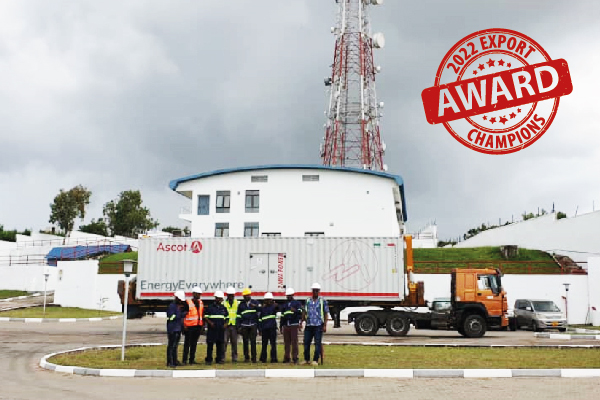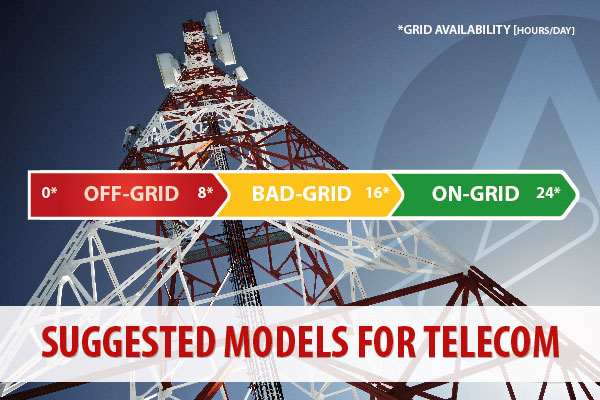Energy Storage Systems: HSPS and ESPP Differences
Ascot's Energy Storage Systems: Hybrid Solar Power System (Off Grid) and Energy Storage Power Plant (On Grid)
Epochal changes, technological and digital advances, renewable energy and increases in the cost of resources have led the energy sector to change the way energy is produced and stored.
In today's energy supply chain, energy storage plays a crucial role in achieving high levels of renewable energy on the grid. It allows electricity to be stored for use when needed, balancing energy supply and demand and ensuring a constant supply for a more flexible and reliable grid system.
At Ascot we devote great attention to the development of energy storage systems all over the world for:
- Off-Grid areas
- On-Grid areas
- reduce the operating hours of a generator set
- lower emissions and promote clean energy
- promote Energy Transition
Our two flagship solutions for energy storage are the Hybrid Solar Power System (HSPS), ideal for Off-Grid areas, and the Energy Storage Power Plant (ESPP), developed to operate effectively in On-Grid areas.
All the differences between Hybrid Solar Power System and Energy Storage Power Plant
Both Ascot technologies allow energy produced from renewable sources to be stored in batteries or other storage devices and then used when needed. And both are an effective solution for producing clean, reliable energy and reducing emissions.
However, there are important differences between the 2 models:
- the intended use
- the type of application
- the power
1. Differences between HSPS and ESPP: the intended use
The first important differentiation of the 2 energy solutions in question is the intended use.
- The Ascot Hybrid Solar Power System (HSPS) is ideal for off-grid areas, i.e. those remote or rural areas not connected to the national grid that need independent energy generation and storage systems.
- In contrast, the Energy Storage Power Plant (ESPP) is the perfect solution for On-Grid Areas, i.e. where the grid is 'good', of which it becomes an integral part.
Off grid vs on grid
In the energy sector, there are two types of areas: On-Grid and Off-Grid. The main difference between the two is the presence or absence of an electricity grid.
In the first case we speak of On-Grid: these areas are connected to the national grid and energy is produced by power plants and distributed through the grid to end consumers.
For these areas, the Energy Storage Power Plant is the perfect solution, because it stores excess energy during periods of low demand and then releases it during periods of higher demand or exchanges it with the grid at a lower cost.
Off-grid areas, on the other hand, are not connected to the national electricity grid. In these areas, energy is produced locally, through solar panels and conventional generators.
In these areas, Ascot provides the Hybrid Solar Power System, which stores the energy generated by the photovoltaic system and completely powers the load, replacing the much more expensive conventional generator, or at least making an important contribution by providing energy for most of the day.
2. HSPS vs ESPP: the type of application
Another big difference is the type of application.
While the HSPS is used as a primary source of energy with the genset becoming an emergency source of energy in stand-by, the ESPP acts as an 'energy buffer', releasing energy only during periods of increased demand.
3. Small power vs big power
Ascot's 2 flagship solutions for energy storage differ mainly in power and, consequently, in the realities for which they are intended.
The Ascot Hybrid Solar Power System is available from 60 to 344 kW (up to 344 kWh).
It is therefore ideal for meeting the energy needs of small businesses, providing many benefits including:
- service continuity
- network stability
- emission reduction of up to 100 per cent
- reduction in operating costs
- reduction of fuel consumption by up to 100%
The power range of the Energy Storage Power Plant varies from 100 kW to 3000 kW (233 kWh to 7000 kWh).
It is therefore an optimal solution for large industries in various sectors, as it helps companies limit their dependence on the network with important benefits:
- overcome power outages and network overloads
- optimise consumption
- reduce energy costs during peak loads
- improve energy efficiency and operability
- develop environmental sustainability
We have covered all the main differences of Ascot's flagship energy storage, for more information contact us!

